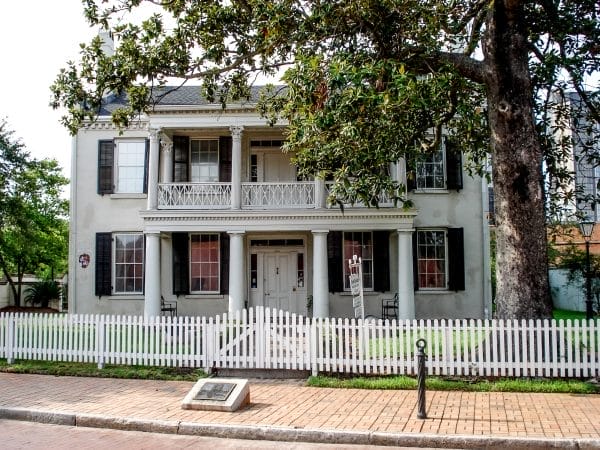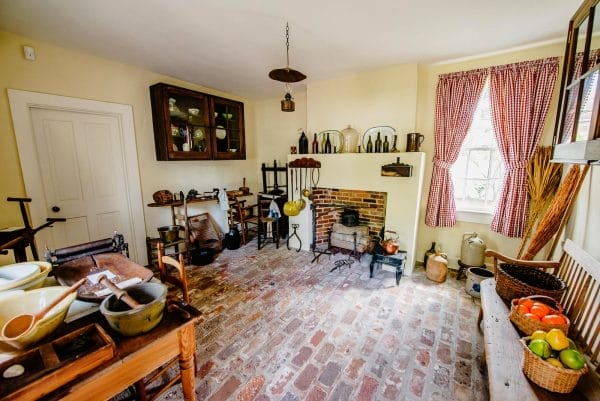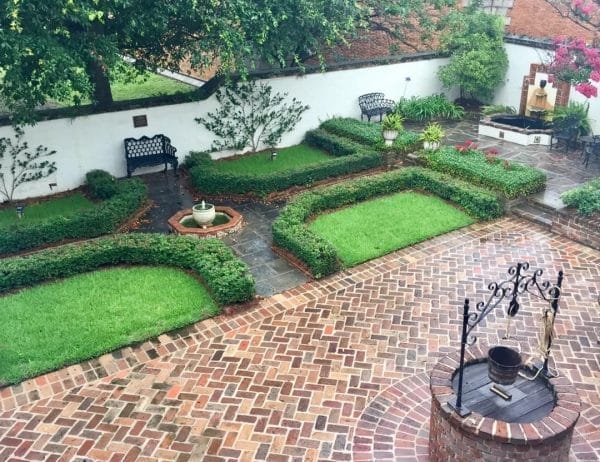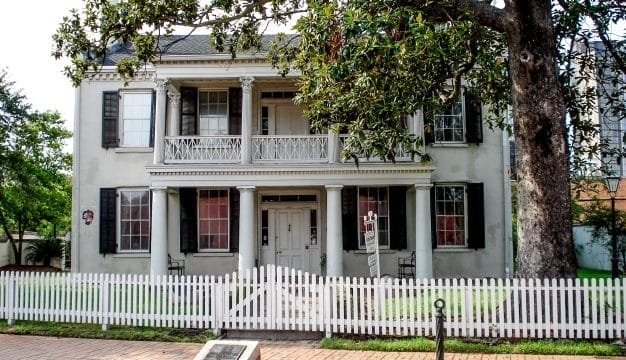Condé-Charlotte House and Museum
 Condé-Charlotte House and Museum
The Condé-Charlotte House and Museum is one of the oldest historical sites in Mobile, Mobile County. Owned and operated by the Alabama chapter of the National Society of Colonial Dames in America (NSCDA), the Condé-Charlotte House and Museum offers a glimpse into the people, cultures, and events that have shaped Mobile. The location where the home stands has held a prison, fort, house, and an office. This cultural institution has been instrumental in showcasing the city’s history as well as shedding light on the importance of archeological research and preservation.
Condé-Charlotte House and Museum
The Condé-Charlotte House and Museum is one of the oldest historical sites in Mobile, Mobile County. Owned and operated by the Alabama chapter of the National Society of Colonial Dames in America (NSCDA), the Condé-Charlotte House and Museum offers a glimpse into the people, cultures, and events that have shaped Mobile. The location where the home stands has held a prison, fort, house, and an office. This cultural institution has been instrumental in showcasing the city’s history as well as shedding light on the importance of archeological research and preservation.
The location of the Condé-Charlotte House and Museum is quite archaeologically significant. During the construction of the George Wallace Tunnel in the latter 1960s, remains of the historic fort were discovered. An archeological excavation conducted by the University of Alabama uncovered the fort’s foundation, moat, and outer earthworks. These discoveries led to the construction of the Fort Condé replica just behind the Condé-Charlotte House and Museum to celebrate the U.S. bicentennial in 1976.
The House
 Condé-Charlotte House Kitchen
The current two-story house sits on the site of the fort, which was Fort Condé under the French, Fort Charlotte under the British, and Fort Carlota under the Spanish. The fort was demolished in the early 1820s after it was no longer needed, and the land was used to build residences. The foundation of the house is supported by the remains of Mobile’s first jail and courthouse, which were constructed in the 1820s by architect Peter H. Hobart and were in use until 1849. Then, Jonathan Kirkbride, a master builder relocating from New Jersey, purchased the lot from the city to use for a house, which was known for many years as the Kirkbride House. Robert Ellis, also a master builder, and Kirkbride designed the house that stands today. They used the foundation, cells, and cell doors of the old courthouse and prison in the construction of the home. The current structure is an example of the Federal-style architecture that was popular from the 1780s to the 1840s.
Condé-Charlotte House Kitchen
The current two-story house sits on the site of the fort, which was Fort Condé under the French, Fort Charlotte under the British, and Fort Carlota under the Spanish. The fort was demolished in the early 1820s after it was no longer needed, and the land was used to build residences. The foundation of the house is supported by the remains of Mobile’s first jail and courthouse, which were constructed in the 1820s by architect Peter H. Hobart and were in use until 1849. Then, Jonathan Kirkbride, a master builder relocating from New Jersey, purchased the lot from the city to use for a house, which was known for many years as the Kirkbride House. Robert Ellis, also a master builder, and Kirkbride designed the house that stands today. They used the foundation, cells, and cell doors of the old courthouse and prison in the construction of the home. The current structure is an example of the Federal-style architecture that was popular from the 1780s to the 1840s.
The two-story Greek Revival portico at the front is one of several additions Kirkbride and Ellis made during the construction. They also added the two interior chimneys at each end of the house as well as the porch that connects to the second story. The current stucco finish was part of a twentieth-century renovation, but the original exterior of the house was brick. The original mortar used to lay the brick was made from local oyster shells found in Mobile Bay. The home’s columns were designed by Kirkbride and also made with brick and stucco. The interior of the home contains a central hall that runs from the front to the back of the building with a stairwell leading to the second floor. Despite the renovations over the years, the majority of the home’s interior remains original.
Varied Uses
The structure originated in 1822 as the city’s first courthouse and jail and was built while the fort still stood. From 1849, when Jonathan Kirkbride purchased the building, it was used as a home. His family owned the property until 1905, and it passed through several owners afterward and eventually fell into disrepair, particularly after the Great Depression.
 Condé-Charlotte Museum Spanish Garden
In 1940, the Historic Mobile Preservation Society (HMPS) bought the Kirkbride House for the purpose of establishing it as a historic house museum. The building was in poor condition and underwent several periods of renovation. During World War II, Mobile was a center of military activity and industry, and the Kirkbride House was used as an officer’s club. Following the war, the HMPS reopened the Kirkbride House to the public for tours and private events. The HMPS, which had operated for a time out of the Kirkbride House, moved to another historic home in Mobile. The city purchased the property in 1957 from the HMPS and then sold it to the National Society of Colonial Dames of Alabama (NSCDA).
Condé-Charlotte Museum Spanish Garden
In 1940, the Historic Mobile Preservation Society (HMPS) bought the Kirkbride House for the purpose of establishing it as a historic house museum. The building was in poor condition and underwent several periods of renovation. During World War II, Mobile was a center of military activity and industry, and the Kirkbride House was used as an officer’s club. Following the war, the HMPS reopened the Kirkbride House to the public for tours and private events. The HMPS, which had operated for a time out of the Kirkbride House, moved to another historic home in Mobile. The city purchased the property in 1957 from the HMPS and then sold it to the National Society of Colonial Dames of Alabama (NSCDA).
In 1961, the NSCDA renamed the Kirkbride House the Condé-Charlotte House, reflecting its vicinity to the old forts as well as its significance to Mobile history. Also that year, the house was reopened for educational purposes. On December 12, 1973, the National Register of Historic Places (NHRP) officially recognized the house.
The Condé-Charlotte House has endured physical stress from hurricanes and construction during the twentieth-century but largely remained open as a museum through renovation efforts. The construction of Interstate 10 destroyed or prompted the relocation of many historic homes surrounding the Condé-Charlotte House. Updates to the home over the years have included new paint, doors, carpets, rugs, and chandeliers, all chosen for their period and regional correctness. A section of the wooden flooring was left open so visitors could see the foundation of the original brick floor from the 1820s jail.
Historical Interpretation
The Condé-Charlotte House and Museum interprets Mobile history under the five flags of the nations that have governed the city: France, England, Spain, the Confederate States of America, and the United States. Each room in the house represents one of the flags. For instance, there are Confederate parlors, an American Federal dining room, a British commandant’s room, a French sitting room and bedroom, and two American bedrooms. Behind the house, a Spanish-themed garden represents the era of Spanish control. The collections in the house range from kitchen equipment and clocks to a silver tea set by noted silversmith Jean-Simon Chaudron. Most of the pieces in the house offer a view into its history, but they also offer insight into the individuals who inhabited the residence.
The Condé-Charlotte House and Museum is centrally located at 104 Theatre Street in Fort Condé Village outside the southern wall of the reconstructed fort. Other historic buildings in the area have been restored and relocated to enhance the village’s atmosphere. The museum draws interest from tourists, local citizens, students, and architects. It continues to offer a variety of educational programs and other events for the public.
Further Reading
- Gums, Bonnie L., Gregory A. Waselkov, and Sarah B. Mattics. Planning for the Past: An Archeological Resource Management Plan for the City of Mobile, Alabama. Mobile, Ala.: University of South Alabama Center for Archeological Studies, 1999.
- Rogers, Laura Jane, and Elizabeth Wade. “Soldiers and Captives, Boarders and Brides: The Many Lives of Condé Charlotte.” Alabama Heritage 97 (Summer 2010): 36-45.
- Thomason, Michael V. R., ed. Mobile: The New History of Alabama’s First City. Tuscaloosa: University of Alabama Press, 2001.



